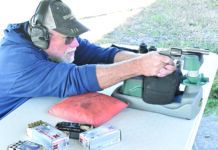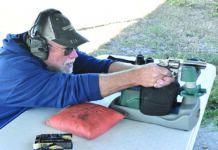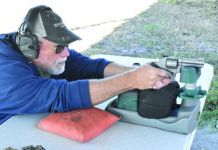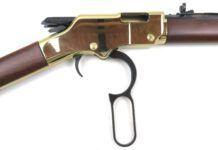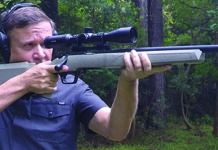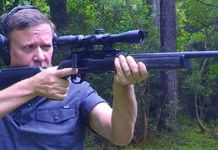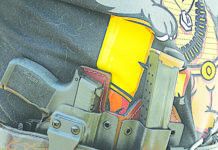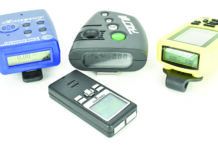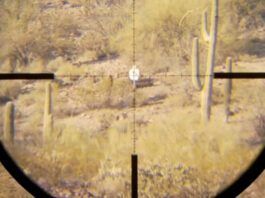First-Light USA Introduces New Tomahawk TRS Magnetic Mount
First-Light USA has introduced a new Tomahawk TRS Magnetic Mount, which permits a Tomahawk tactical light to be positioned on any ferrous surface, regardless of the surface’s shape. It can easily attach the Tomahawk tactical flashlight to a military vehicle, car, truck, work vehicle or boat.
Burris Eliminator II and III LaserScopes Now Shipping
Burris is pleased to announce that the much anticipated Eliminator II and Eliminator III LaserScopes are now being shipped to dealers across the country. The new 3.5x-10x-50 Eliminator LaserScope, which was introduced in August, starting shipping in October.
MidwayUSA Teams up with LensPen for New Product
MidwayUSA recently released the MidwayUSA $7.99 LensPen, a way to properly care for lenses on rifle scopes, spotting scopes and binoculars.
AcuSport Adds FireClean Brand to Gun Cleaning Lines
AcuSport Corporation, a leading distributor of shooting and hunting products, has added FireClean advanced gun oil to its cleaning products lines. FireClean is non-toxic and odorless, and is designed to melt carbon while lubricating and conditioning the gun in one step.
New BOG-POD HD-3 Model is Tripod on Steroids
BOGgear has just introduced a brand-new tripod, the BOS Series HD-3S Short Tripod, and the MINI-U Shooting Rest, a smaller version of the popular Universal Shooting Rest.
Safariland Launches Tactical Holster With Cordura Nylon Finish
Safariland’s new Model 6004USN SLS Low Signature Tactical Holster capitalizes on the features of best-selling 6004 tactical thigh rig and the newly introduced 6378USN.
New Howard Leight Impact Sport MIL Earmuff Provides Active Hearing Protection
Honeywell Safety Products’s new Howard Leight Impact Sport MIL sound amplification earmuff provides passive hearing protection from firearms while allowing the shooter to hear range commands.
Digiscope with Kowa’s New iPhone Adapter
Kowa Sporting Optics proudly announces the launch of Kowa's newest product, the TSN-IP4S iPhone adapter for the iPhone 4 and 4S models. Increased popularity in digiscoping, along with the ease of picture sharing, makes this product the perfect addition to any hunter's gear list. Ideal for use while scoping game, the iPhone adapter will take digiscoping to a whole new level.
Special Knife Deal Offered for Breast Cancer Awareness Month
KnifeWorks and Doug Ritter are offering a special combination of Ritter's Pink Mini-RSK MK1 knife and the DR Limited Special Edition Pink Photon illuminator for $120 during Breast Cancer Awareness Month.
Leatherwood Optics Introduces 1-4x CMR-AK762 Tactical Scope
Hi-Lux Optics has updated its CMR1-4x24mm model tactical scope with a new reticle designed for the standard AK-47 service round.
Meopta Expands MeoPix iScoping Adapter Line
High-end sports-optics manufacturer Meopta USA is producing additional versions of the MeoPix iScoping Adapter to fit Swarovski, Leica and Zeiss spotting scopes and binoculars, as well as most popular mid-level optics brands.
Join Brownells Zombie Elimination Crew
As Halloween approaches, the Brownells Zombie Elimination Crew (ZEC) promotion is in full swing. The ZEC is made up of mismatched, post-Apocalyptic characters bent on saving the world from the wrath of the Undead. Their single commonality: absolute preparedness for an outbreak. Their continuing existence is evidence that when fully-equipped, anyone can survive.


